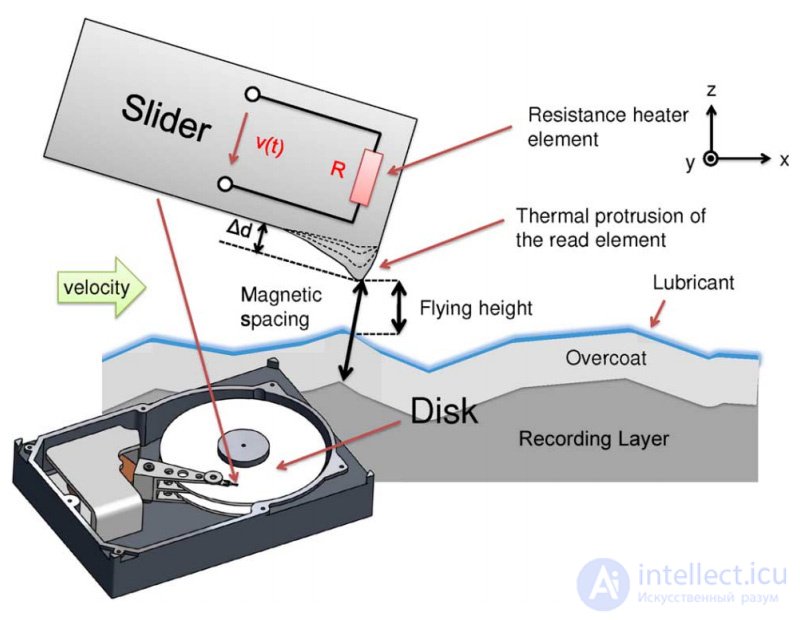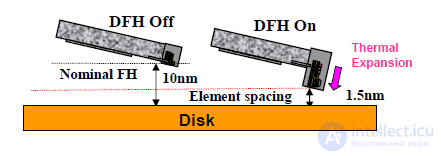Lecture

Consider the technology of dynamic adjustment of the flight height of the hard disk head (Dynamic Flight Height).
Problems associated with increased information
So, for today the topic of our conversation is the density of recording information on a magnetic disk and regulation of the height of flight of the head above the surface.
One of the ways to increase the volume is to increase the host information per square inch, in other words, to increase the recording density.
This is achieved by reducing the distance between the head and the surface, so the problem emerges - from the slightest vibrations the head shakes the surface, forming scratches and gash.
Dynamic change in altitude - how does it work?
As is known, the head (600) is located inside the so-called slider (black plate, “sliding” above the surface of the disk). But, besides the reading and writing elements themselves (35.95), there are also heaters (30, 90). Why are they needed?
Often, when writing or reading, due to the large height of the slider's flight, the interaction of the heads and the magnetic surface is difficult due to the poor quality of the plates, and in this case the following occurs:
the heating element, passing a current through itself, causes deformation of the lower part of the slider, thereby reducing the distance to the disk. Thus, by increasing or turning off the heat, it is possible to reduce or increase the distance (fly height) from the lower edge (100) to the disk (400).
What does fly height give us?
First, in the case of the vibration sensor triggering, the heating elements are turned off, and the slider returns to its original position, thereby minimizing the likelihood of contact with the surface. This saves us from the first problem.
Secondly, different parts of the disk have different magnetic field strength, therefore, in the right places reducing the distance to the surface, we can get information even from “weak” areas. Thus, you can use less high-quality components in the production, getting a quality result.
Calibration, flight altitude profile.
Each head during the factory test passes calibration, the results are recorded in profiles (part of the adaptive information). The profiles take into account the required distance to the surface of the disk to read and write information on different parts of the disk, as well as the minimum flight altitude.

However, non-technology has a significant drawback which significantly affects the life of the hard disk. The reason for this system is DFH.
The heater is built into the heads. If the reading deteriorates, the software adds current to the heater, due to thermal expansion the slider thickens in a part of the MR element, as a result of which MR approaches the plate. At some point, physically hooks the plate. Banal untested code in the worn mechanics. Actually, sigate has very often problems due to untested code.
The flight height of a unit of nanometers. 
Comments
To leave a comment
Electromechanical devices of electronic devices
Terms: Electromechanical devices of electronic devices